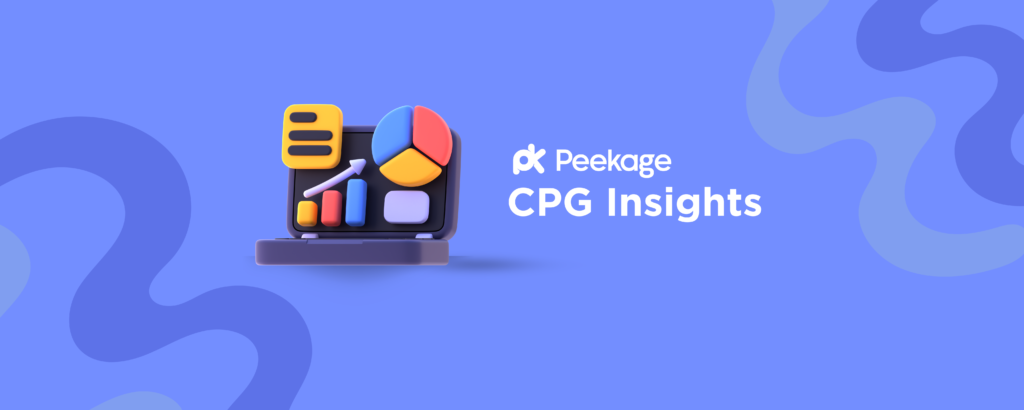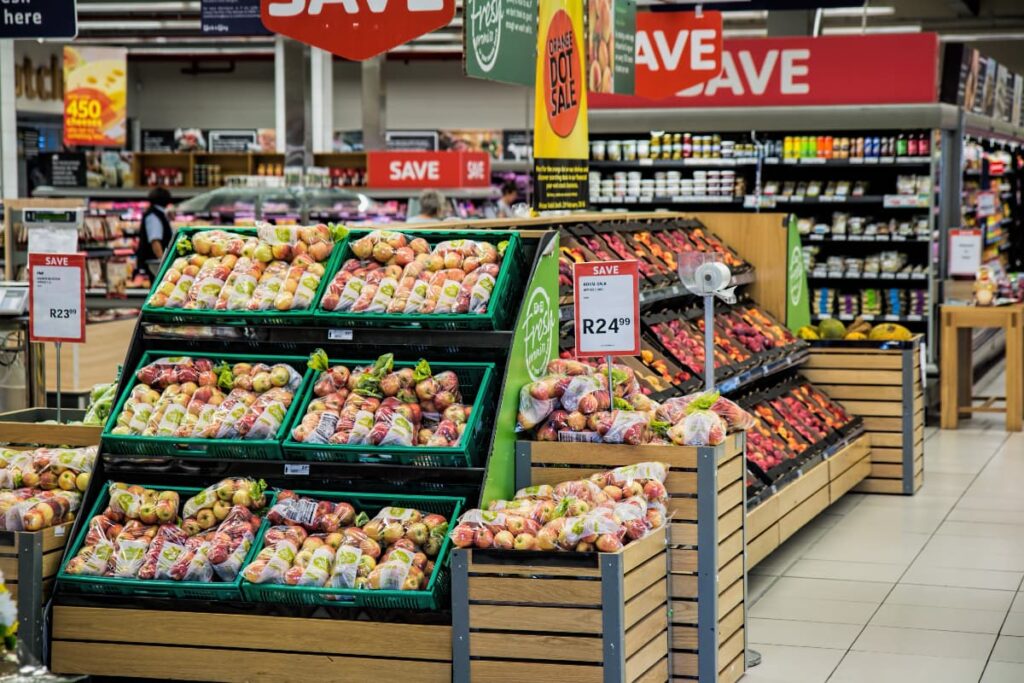Introduction: Understanding the Crucial Role of Retail Experience for Consumer Packaged Goods (CPG) Brands
In the ever-evolving world of retail, personalized retail experiences are becoming increasingly important for Consumer Packaged Goods (CPG) brands including those in the food and beverage, personal care, and household products sectors. By understanding and anticipating customer needs, preferences, and behaviors, brands can create experiences that not only meet but also exceed expectations.
CPG brands must comprehensively understand their customers to curate a superior retail experience. This involves collecting and analyzing data about customers' in-store experiences, behaviors, and purchasing patterns. Collecting such data presents invaluable insights, enabling brands to tweak their marketing strategies, refine product placements, and improve overall retail experiences.
The presentation of products to retailers also plays a significant role in shaping the retail experience. A product's packaging, positioning, and the story it tells are elements that attract both retailers and customers. Therefore, showcasing products effectively to retailers is of utmost importance.
Finally, presenting the collected customer data to retailers is crucial. It allows for collaborative efforts toward enhancing the retail experience, as the data provides actionable insights into customer preferences and behaviors. Retailers can make informed decisions to optimize store layouts, staff training, and other in-store elements.
This blog post will delve into why the retail experience matters for CPG brands, how to collect and analyze customer experience data, how to effectively present products to retailers, and the importance of sharing insights with retail partners. Join us as we explore these pivotal aspects in shaping superior retail experiences in the CPG industry.
The Importance of Data Collection in Enhancing Retail Experiences
The path to creating superior retail experiences begins with data. Accurate, relevant data offers CPG brands a window into their customers' behaviors, preferences, and decision-making processes. In the increasingly competitive landscape of the Consumer Packaged Goods (CPG) industry, brands are constantly searching for ways to differentiate themselves and create compelling retail experiences. This is where data collection comes into play, serving as the foundation upon which successful strategies are built.
1. Consumer Insights: Key to Personalization
The main reason why data collection is so vital is that it provides detailed consumer insights. Knowing your customer is no longer a luxury but a necessity for brands in the CPG industry. Understanding consumer behavior, preferences, purchasing habits, and lifestyle choices can enable brands to design personalized experiences. For instance, if data reveals a customer segment that values organic, eco-friendly products, a brand could emphasize its sustainable practices and highlight its organic product range for this group.
2. Optimizing Product Placement
Product placement plays a critical role in the retail experience. Data on how consumers navigate the store, which products they're drawn to, and what they typically buy together can guide brands in optimizing product placement. A well-placed product can increase its visibility, enhance its appeal, and ultimately drive sales.
3. Refining Marketing Strategies
Data collection is also essential in refining marketing strategies. It helps brands understand which marketing messages resonate with their audience, which promotions drive the most sales, and which channels reach their target audience most effectively. With these insights, brands can tailor their marketing efforts to be more targeted, more relevant, and ultimately more effective.
4. Enhancing Product Development
Insights derived from data can also feed into product development, helping brands stay aligned with evolving consumer demands. If data reveals a growing trend for vegan, cruelty-free personal care products, a brand in this space could consider expanding its vegan range.
5. Strengthening Retailer Relationships
Lastly, sharing collected data and insights with retail partners can strengthen relationships and lead to more effective collaboration. This shared understanding of the consumer can help both parties align their strategies to create a harmonious, compelling retail experience.
In summary, data collection is critical for CPG brands aiming to enhance the retail experience. It enables brands to stay attuned to their customers' needs, optimize their strategies, and ultimately offer an experience that resonates with their audience. In the words of W. Edwards Deming, "Without data, you're just another person with an opinion." It's the data-driven brands that will stay ahead of the curve, creating retail experiences that truly connect with their customers and drive growth in the competitive world of CPG.
The Strategic Craft of Data Collection for CPG Brands
Data is an indispensable resource for CPG brands looking to refine their retail experience. It acts as the compass guiding the brands in tailoring their strategies to best fit the needs and preferences of the consumers. With data collected from various touchpoints, brands can draw insights and take well-informed steps toward an enhanced retail experience. But how exactly can brands gather this treasure trove of data?
1. Customer Surveys: A Direct Line to the Consumer's Mind
One of the most traditional yet powerful methods of data collection is through customer surveys. These can be conducted in various formats - in-store or through email. The key to effective surveys lies in asking the right questions. Brands could ask customers about their product preferences, their in-store experience, the effectiveness of the product display, ease of locating the products, and so on. Surveys provide direct insight into the customer's mind, and the feedback obtained can help brands understand what's working and what needs improvement.
However, traditional in-store surveys do come with their own set of challenges. They may disrupt the shopping experience, potentially leading to less thoughtful feedback. Bias might also occur, as the survey takes place in the environment being questioned, influencing the responses. Moreover, response rates might be lower as some customers prefer to avoid interaction.
In light of these challenges, new data collection tech-based platforms have emerged, offering a solution to these problems while enhancing the speed and accuracy of data collection. We'll discuss these innovative platforms and their benefits in more detail later in the article.
According to Esteban Kolsky, 72% of customers will share a positive experience with 6 or more people. On the other hand, if a customer is not happy, 13% of them will share their experience with 15 or even more.
2. In-Store Observations: Understanding Consumer Behavior
Observing customers in-store is another valuable method of data collection. This involves studying customers' shopping behaviors and patterns. For instance, brands can gather data on which products customers are drawn to, how long they spend in each aisle, what prompts them to choose one product over another, and so on. Such observations can reveal insightful patterns and trends that may not be apparent in survey responses.
However, in-store observations can be both costly and time-consuming. The logistics of organizing and conducting observations, especially in multiple locations or over extended periods, can significantly strain a brand's resources. Furthermore, observer bias may affect the validity of the data collected. This method also does not provide any insights into the motivations behind customer actions, which can only be directly obtained from the customers themselves.
New platforms address these challenges by engaging consumers to provide feedback during their shopping experience. They allow for real-time data collection at a fraction of the cost of traditional observation methods. The full potential and efficiency of these new data collection platforms will be explored later in the article.
3. Leveraging Technology: The Power of Analytics
The digital era has brought about significant advancements in data collection tools for CPG brands. Platforms leveraging digital analytics can track and gather data on customer interactions, purchasing patterns, and feedback in real-time, offering immediacy and accuracy that traditional methods may lack.
Digital analytics platforms help maintain detailed records of customer interactions and purchases through customer relationship management (CRM) systems. These platforms also make social media a valuable data collection tool, offering a wealth of data on customer preferences and sentiments through social listening.
4. Collaborating with Retail Partners: Sharing Data for Mutual Benefits
The process of collaborating with retail partners can provide brands with valuable data, but it often faces a major obstacle: it's typically a one-way solution. Retailers have their own set of data on customer behavior, sales patterns, and product performance. However, due to competitive factors or data privacy issues, retailers may be reluctant to share this information with CPG brands.
In the era of personalization, CPG brands are increasingly realizing the value of data. By deploying these methods of data collection, brands can obtain the insights needed to tailor their strategies and enhance their retail experiences. The collected data illuminates the path toward what consumers truly want and how brands can deliver on these expectations, thereby driving customer satisfaction, loyalty, and ultimately, business growth.
Sharing Insights with Retail Partners: A Collaborative Approach to Improving Retail Experiences
In the pursuit of improved retail experiences, a collaboration between CPG brands and retailers plays a crucial role. Although the traditional approach to data sharing often presents a one-way street, embracing new methods can mitigate these challenges, strengthening the relationship between brands and retailers, and enriching the shopping experience for customers.
1. The Mutual Benefit of Data Sharing
The conventional approach to data sharing between CPG brands and retailers often faces hurdles due to its one-way nature. However, a shift in this paradigm can benefit both parties. For CPG brands, providing insights into consumer behavior and purchase patterns can help retailers sell their products more effectively. Furthermore, if retailers are willing to share their data, it will complement brands' existing data and enhance their understanding of consumers.
2. Collaboration for Tailored Retail Strategies
When CPG brands and retailers collaborate based on shared insights, they can work together to create tailored retail strategies that benefit both parties. They can align their goals, coordinate their efforts, and jointly tackle challenges. For example, if data shows that customers often struggle to locate a brand's products in the store, the brand and retailer can collaborate on solutions, such as improving signage, rethinking product placement, or launching in-store promotions.
Harnessing the Power of Third-Party Platforms
In today's digital age, various platforms and third-party services offer robust solutions for data collection and analysis. These platforms bring the advantage of vast reach, deep analytics capabilities, and resources tailored for different industry needs, including the CPG sector.
One effective approach is leveraging platforms that specialize in running in-store studies or in-home product testing campaigns. These platforms have the tools and expertise to design comprehensive surveys, distribute them to a broad or targeted audience, and compile and analyze the results. This can provide CPG brands with a wealth of consumer insights, from product preferences to shopping behavior.
CPG brands can also consider partnering with data analysis service providers. These third-party services use advanced data analysis techniques and artificial intelligence to extract meaningful insights from large volumes of data. They can identify trends, predict customer behavior, and provide actionable recommendations for strategy enhancement.
Additionally, a versatile consumer insight platform, like Peekage, provides an all-in-one solution for data collection, campaign management, and data analysis. These comprehensive platforms can run diverse tests like in-store optimization, where customer interaction with products can be studied and improved, Packaging and Positioning tests to determine the most appealing product presentation and market placement, and in-home product testing, providing an avenue to evaluate consumer responses in a natural setting.
What truly distinguishes these platforms is their ability to streamline the entire process. The complex and often tedious tasks of designing tests, sending products, collecting data, and generating reports are transformed into a few simple clicks. This effortless approach saves time, ensures data accuracy, and facilitates immediate action on insights.
By leveraging the power of platforms like Peekage, CPG brands can gather and utilize consumer data more effectively, driving better decision-making, and ultimately leading to improved retail experiences. These platforms epitomize the future of data-driven decision-making, enabling brands to tune into consumer needs and preferences with unprecedented ease and accuracy.
In conclusion, these platforms and third-party services can be powerful tools for CPG brands seeking to collect and analyze data. By providing expert resources and advanced analytics capabilities, they can help brands gain a deeper understanding of their customers and refine their retail experiences accordingly. In an industry where understanding and adapting to consumer behavior is key, these solutions can provide the edge that brands need to stand out.
Conclusion: From Data to Differentiation - Creating Unique Retail Experiences
In the CPG industry's competitive landscape, data collection and interpretation are not luxuries but necessities. The data collected from customer interactions, preferences, and behaviors play a central role in creating retail experiences that shape a customer's perception, decision-making, and loyalty.
Various methods of data collection, such as in-store observations and customer surveys, provide a depth of understanding about the consumer. When this raw data transforms into actionable insights, it empowers brands to craft tailored retail experiences, refine marketing strategies, and innovate products in line with consumer demands.
The role of third-party platforms is critical in enhancing the data collection process and providing extensive insights into consumer behavior.
In the CPG world, the power of data is undeniable. Brands leveraging this data effectively can offer superior retail experiences, stand out in the market, and form lasting connections with customers in an ever-evolving retail landscape.




